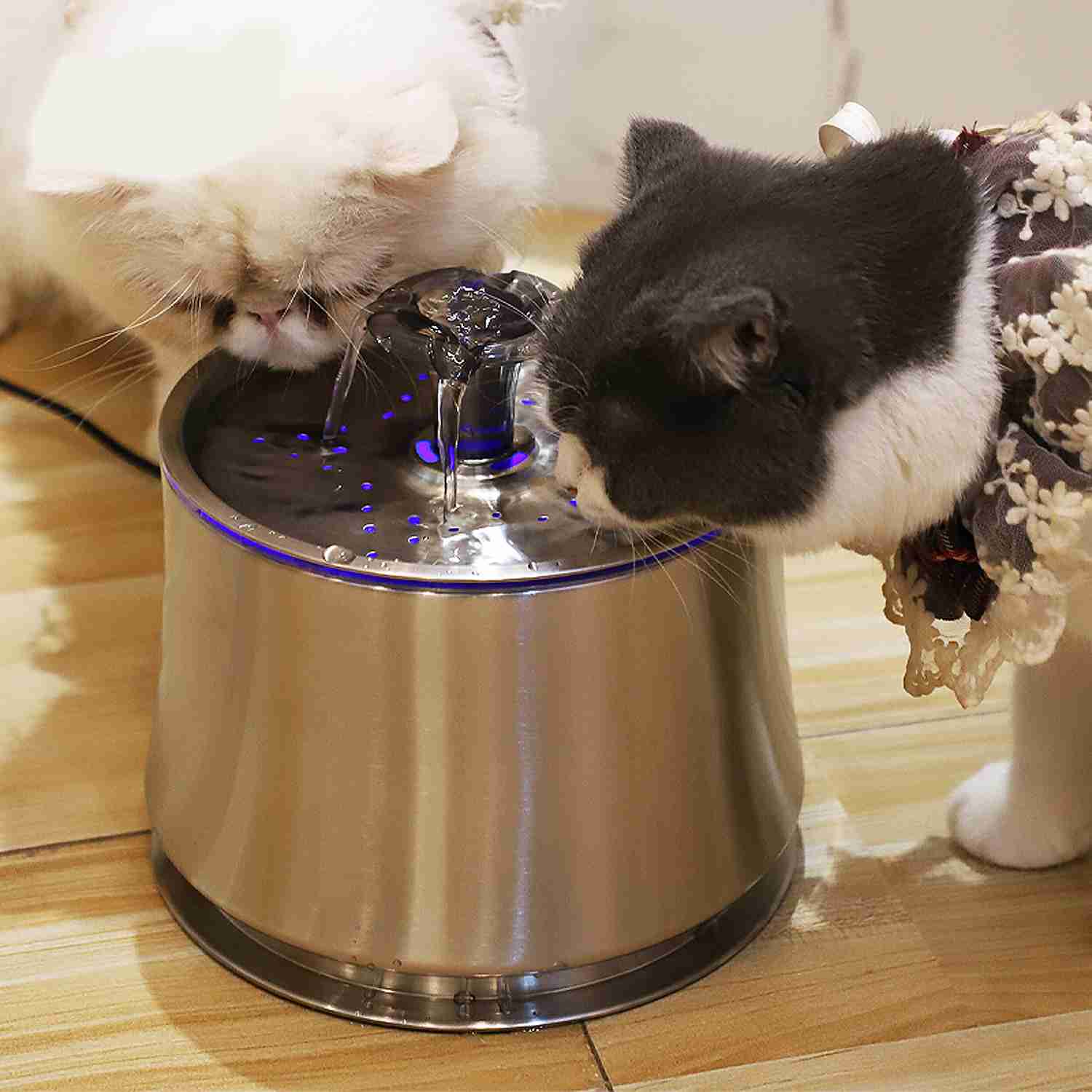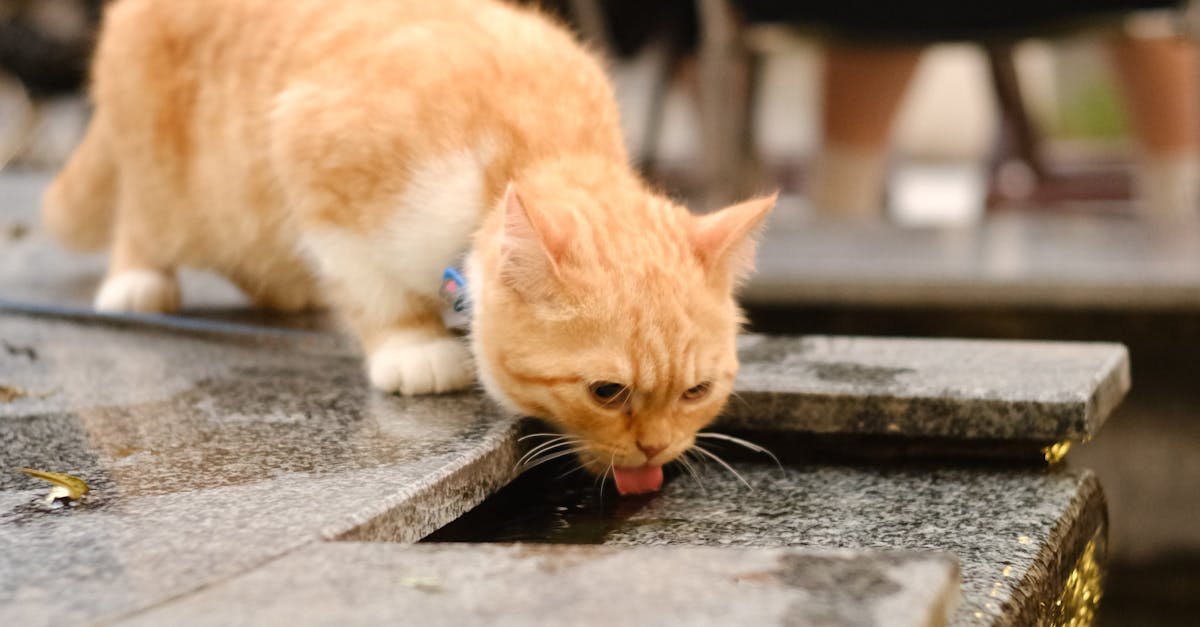
Cat Water Fountain – Benefits, Types & Maintenance Guide
Estimated reading time: 8 minutes
Key Takeaways
- Cat water fountains encourage hydration by mimicking running water, which cats naturally prefer.
- They help prevent urinary and kidney issues by promoting increased water intake.
- Fountains with filters provide cleaner, better-tasting water by removing impurities.
- Stainless steel and ceramic fountains are the most durable and hygienic options.
- Regular cleaning (weekly) and filter changes (every 2-4 weeks) are essential for maintaining a healthy fountain.
Table of Contents
- Introduction
- Benefits of a Cat Water Fountain
- Best Cat Water Fountain for Multiple Cats
- Ceramic vs. Stainless Steel Cat Fountain
- How to Clean a Cat Water Fountain
- Conclusion & Final Recommendations
- Frequently Asked Questions
Introduction
Did you know that proper hydration is just as important for your cat as it is for you? Water supports kidney function, digestion, and even helps prevent serious health issues like urinary tract infections (UTIs) and kidney disease. Yet, many cats are picky drinkers—they often ignore stagnant water bowls but can’t resist the allure of flowing water.
That’s where a cat water fountain comes in. These clever devices mimic running water, encouraging cats to drink more while keeping their water fresh and clean. If you have multiple cats, a fountain is even more essential—it reduces refills and ensures every feline gets their fair share.
In this guide, we’ll cover:
- ✔ Why cat water fountains are better than bowls
- ✔ The best fountains for multi-cat homes
- ✔ Ceramic vs. stainless steel—which is best?
- ✔ Step-by-step cleaning & maintenance tips
Let’s dive in!
Benefits of a Cat Water Fountain
Why Should You Switch to a Cat Water Fountain?
A cat water fountain isn’t just a fancy gadget—it’s a health-boosting tool for your pet. Here’s why:
- ✅ Encourages Hydration
Cats instinctively prefer moving water because, in the wild, running water is safer than stagnant pools. A fountain’s gentle flow entices them to drink more, reducing the risk of dehydration.
(Source: Rover) - ✅ Supports Urinary & Kidney Health
Cats prone to UTIs, kidney disease, or bladder stones benefit from increased water intake. A fountain helps flush out toxins and keeps their urinary system healthy. (For more on feline health, see our guide on Senior Cat Health.)
(Source: Zoetis) - ✅ Filters Out Impurities
Most fountains have built-in carbon filters that remove:
– Dirt & debris
– Hair & fur
– Chlorine & heavy metals
This means cleaner, better-tasting water for your cat. - ✅ Great for Multi-Cat Households
Instead of refilling bowls all day, a fountain with a large reservoir (1-2 liters) ensures multiple cats have constant access. Some models even have multiple spouts to prevent crowding. (Need tips for multi-pet harmony? Check out Pet Communication.) - ✅ Mental Stimulation
The sight and sound of flowing water keep cats engaged, especially indoor cats who crave enrichment. - ✅ Less Work for You
No more constant refills! Just top up the reservoir every few days and clean it weekly.
Best Cat Water Fountain for Multiple Cats
What to Look for in a Multi-Cat Fountain
If you have two or more cats, choose a fountain with:
- 🔹 Large Capacity (1.5L or more) – Fewer refills!
- 🔹 Multiple Drinking Areas – Prevents competition.
- 🔹 Durable Material – Stainless steel or ceramic last longer than plastic. (Explore Sustainable Pet Products for eco-friendly options.)
- 🔹 Quiet Pump – No annoying motor sounds.
Top Picks for Multi-Cat Homes
1. Catit Flower Fountain
- ✔ Pros:
– Three water flow settings (bubbler, flower, or gentle stream)
– Holds 3 liters (great for multiple cats)
– Affordable & easy to clean - ❌ Cons:
– Plastic parts can scratch over time
– Filters need frequent replacement
2. Petlibro Stainless Steel Fountain
- ✔ Pros:
– Stainless steel (hygienic & durable)
– Ultra-quiet pump
– Large 2.5L capacity - ❌ Cons:
– Slightly pricier than plastic models
3. Pioneer Pet Raindrop Ceramic Fountain
- ✔ Pros:
– Ceramic (stylish & bacteria-resistant)
– Dishwasher-safe
– Heavy base prevents tipping - ❌ Cons:
– Fragile if dropped
Verdict: For multi-cat homes, stainless steel or ceramic fountains are best—they’re long-lasting, hygienic, and easy to clean.
Ceramic vs. Stainless Steel Cat Fountain
Which Material is Best?
| Feature | Ceramic Fountain | Stainless Steel Fountain |
|---|---|---|
| Durability | Heavy, chip-resistant | Lightweight, dent-resistant |
| Cleaning | Dishwasher-safe | Dishwasher-safe |
| Safety | Non-toxic, non-porous | Rust-resistant, non-toxic |
| Aesthetics | Decorative, stable | Sleek, modern look |
Key Takeaways:
- ✔ Ceramic – Best for style & stability, but can break if dropped.
- ✔ Stainless Steel – Most durable & hygienic, resists scratches.
- ❌ Avoid Plastic – Can harbor bacteria and absorb odors over time. (For more on pet-safe materials, read Creating a Pet-Friendly Home.)
(Source: Litter-Robot)
How to Clean a Cat Water Fountain
Step-by-Step Cleaning Guide
🚿 Frequency: Clean once a week to prevent slime & bacteria buildup.
- Disassemble – Take apart the fountain (bowl, pump, hoses).
- Scrub – Use mild soap & a brush to clean all parts.
- Rinse Thoroughly – No soap residue!
- Clean the Pump – Remove debris from the motor.
- Replace the Filter – Change every 2-4 weeks.
- Reassemble & Refill – Add fresh water.
🔹 Pro Tip: Use vinegar & water (50/50) for deep cleaning—just rinse well! (For more cleaning hacks, see Pet First Aid.)
(Source: KittySpout)
Conclusion & Final Recommendations
A cat water fountain is a game-changer for:
- ✔ Encouraging hydration
- ✔ Preventing urinary/kidney issues
- ✔ Keeping water clean
- ✔ Reducing refills in multi-cat homes
Best Choice for Most Owners:
👉 Stainless steel (durable & easy to clean)
👉 Ceramic (stylish & stable)
Avoid plastic—it scratches easily and harbors bacteria.
Frequently Asked Questions
- Why do cats prefer running water?
- How often should I clean my cat’s water fountain?
- Can I use tap water in my cat’s fountain?
- What is the best fountain for a single cat?
Why do cats prefer running water?
Cats instinctively prefer running water because, in the wild, stagnant water is more likely to be contaminated. The movement of water signals freshness, making it more appealing and safer to drink.
How often should I clean my cat’s water fountain?
You should clean your cat’s water fountain once a week to prevent bacteria and slime buildup. Additionally, replace the filter every 2-4 weeks, depending on usage.
Can I use tap water in my cat’s fountain?
Yes, tap water is generally safe, but if your tap water has a high chlorine content or heavy metals, consider using filtered water. The fountain’s built-in filter will help remove impurities.
What is the best fountain for a single cat?
For a single cat, a stainless steel or ceramic fountain with a 1-1.5L capacity is ideal. Models like the Petlibro Stainless Steel Fountain or Pioneer Pet Raindrop Ceramic Fountain are excellent choices.
